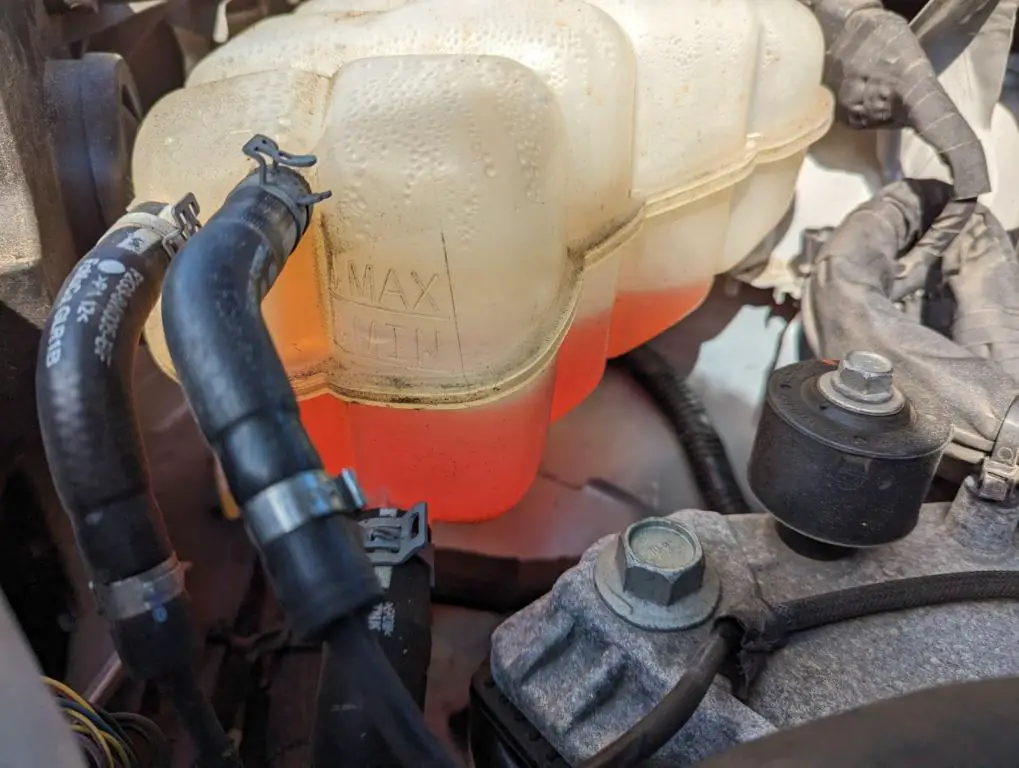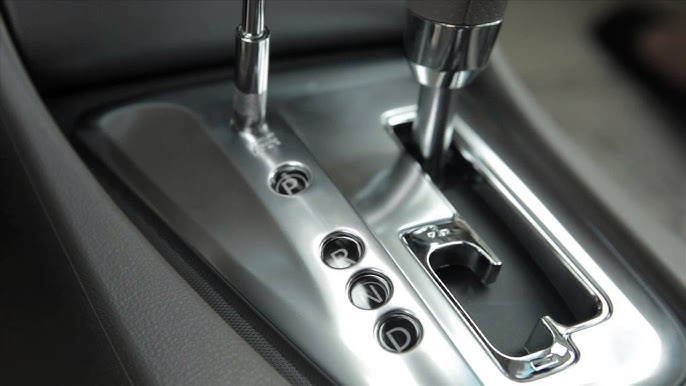In recent years, owners of the 2017 Ford Edge have been reporting a specific issue – a coolant leak.
This problem, while not uncommon in vehicles, can lead to serious engine damage if not addressed promptly.
In this article, we will delve into the issue of the “2017 Ford Edge Coolant Leak”, exploring its causes, effects, and most importantly, what you should do if you find yourself facing this problem.
Stay tuned as we navigate through this prevalent issue, providing you with comprehensive insights and practical solutions.
Let’s get started.
What are some common causes of coolant leaks in my 2017 Ford Edge?
Here are some common causes of coolant leaks in the 2017 Ford Edge:
1: Defect in the Design of the Engine Block and Cylinder Head
The 2017 Ford Edge has been reported to have a design defect in the engine block and cylinder head. This defect can lead to coolant leaks as the coolant can escape from the engine through these defects. This is a manufacturing issue and may require a replacement of the affected parts or even the entire engine in severe cases.
2: Inadequate Seal on the Head
The seal on the head of the engine is designed to prevent coolant and other fluids from leaking into the combustion chambers. If this seal is inadequate or fails, it can allow coolant to seep into the combustion chambers. This can lead to a variety of problems, including coolant leaks, engine misfires, and even engine damage.
3: Overheating
Overheating is a common sign of a coolant leak in the 2017 Ford Edge. The engine relies on coolant to regulate its temperature. If there’s a leak and the coolant level drops, the engine can overheat. This can cause further damage to the engine and other components. Regularly checking your coolant level and engine temperature can help catch a coolant leak before it leads to overheating.
4: Misfiring
Engine misfires can be a sign of a coolant leak in your 2017 Ford Edge. When coolant leaks into the engine, it can cause the engine to misfire. This is because coolant is not meant to be in the combustion chamber and can interfere with the combustion process. Misfires can cause a rough idle, loss of power, and can damage the engine over time.
5: Engine Fires
In some cases, coolant leaks in the 2017 Ford Edge have been known to cause engine fires. This is a serious issue and can be very dangerous. If coolant leaks onto hot engine parts, it can potentially ignite and cause a fire. If you smell coolant or see smoke coming from your engine, it’s important to stop driving immediately and have your vehicle inspected by a professional.
How can I fix a coolant leak in my 2017 Ford Edge?

Fixing a coolant leak in your 2017 Ford Edge involves several steps. Here’s a general guide:
-
Identify the Leak
The first step in fixing a coolant leak in your 2017 Ford Edge is to identify the source of the leak. This could be from the radiator, hoses, water pump, or even the engine block itself. You can do this by looking for signs of coolant on the ground under your car or around the engine bay. It’s important to do this when the engine is cool to avoid burns.
-
Drain the Coolant
Before you can fix the leak, you’ll need to drain the coolant from your car. This is a crucial step as it prevents the coolant from spilling out when you’re working on the leak. Make sure to do this when the engine is cool and always use a container to catch the coolant.
-
Inspect the Engine
Once the coolant is drained, you can inspect the engine block and cylinder head surfaces. Look for any signs of damage or wear that could be causing the leak. This could include cracks, corrosion, or other signs of damage. It’s important to thoroughly inspect these areas to ensure you identify all potential sources of the leak.
-
Replace the Faulty Part
If the leak is coming from a hose or the radiator, these parts may need to be replaced. If the leak is coming from the engine block or cylinder head, the head gasket may need to be replaced. Replacing these parts can be a complex task and may require special tools. If you’re not comfortable doing this yourself, it’s always best to take your car to a professional mechanic.
-
Refill the Coolant
Once the faulty part has been replaced, you can refill your coolant. Make sure to use the correct type of coolant for your 2017 Ford Edge. It’s also important to ensure that the coolant is filled to the correct level. Overfilling or underfilling can cause problems with your cooling system.
-
Monitor Your Car
After the repair, it’s important to keep an eye on your car to make sure the coolant leak doesn’t reoccur. Regularly check your coolant levels and look for any signs of a leak. If you notice any issues, it’s important to get your car checked out by a professional as soon as possible. Regular maintenance can help prevent future coolant leaks and prolong the life of your vehicle.
How can I tell if my car has a coolant leak?
Detecting a coolant leak in your car involves observing certain signs and symptoms. Here are some ways you can tell if your car has a coolant leak:
-
Low Coolant Level
If you notice that the coolant level in your car’s reservoir is consistently low or empty, this could be a sign of a leak.
-
Overheating Engine
Coolant plays a crucial role in regulating your engine’s temperature. If your engine is frequently overheating, it could be due to a coolant leak.
-
Visible Coolant Leak
You might see a puddle of coolant under your car. Coolant is typically bright green, pink, or yellow.
-
Sweet Smell
Coolant has a sweet smell. If you notice this smell while driving or when your car is parked, it could indicate a coolant leak.
-
White Smoke from Exhaust
If there’s a coolant leak in the engine, it could cause white smoke to come out of the exhaust.
Is There A Recall On Ford Coolant Leak?

Yes, there has been a recall on certain Ford models due to coolant leaks. The recall primarily affects certain 2017-2019 Ford Fusion and Escape models equipped with a 1.5L GTDI Engine. The issue stems from coolant intrusion into the cylinder bores, which can lead to a low coolant level, white exhaust smoke, and a rough running condition.
The recall provides a no-cost, one-time repair to the 1.5L short block, due to coolant intrusion to the cylinder bores, for 7 years of service or 84,000 miles from the warranty start date of the vehicle, whichever occurs first1. If a vehicle has already exceeded either the time or mileage limits, this no-cost, one-time repair will last through November 30, 2022.
Affected models include the 2017-2019 Ford Escape and the 2017-2019 Ford Fusion. If your vehicle is affected, it’s recommended to get it serviced as soon as possible to prevent further damage. If you suspect that your Ford car has a coolant leak, you should stop driving it and take it in to an authorized service provider as soon as possible.
How do you detect where a coolant leak is coming from?
Detecting where a coolant leak is coming from involves a few steps:
-
Check the Ground
The first sign of a coolant leak is often a puddle under your car. The coolant can be pink, green, or orange, and it usually has a sweet smell.
-
Inspect the Radiator
The radiator is a common source of coolant leaks. Look for signs of coolant on the radiator itself or on the ground underneath it.
-
Check the Hoses
The hoses that carry coolant can also develop leaks. Check for wet spots, cracks, or bulges on the hoses.
-
Look at the Water Pump
The water pump is another common source of leaks. It has a weep hole that can leak coolant if the pump is failing.
-
Inspect the Engine Block
Cracks in the engine block can cause coolant leaks. This is a serious issue that requires immediate attention.
-
Use a Pressure Tester
If you can’t find the source of the leak, a pressure tester can help. This tool pressurizes the cooling system, making it easier to spot leaks.
Can you Drive with Coolant Leak?
Driving with a coolant leak is not recommended. Coolant is crucial for maintaining the engine’s temperature. A leak can lead to low coolant levels, causing the engine to overheat and potentially leading to severe engine damage. If you notice a coolant leak, it’s important to address it as soon as possible.
Continuing to drive with a coolant leak can lead to more serious problems, including engine failure. If you suspect a coolant leak, the best course of action is to have your vehicle inspected by a professional mechanic immediately. It’s always better to be safe than sorry when it comes to potential vehicle issues.
What is Considered a Bad Coolant Leak?
A bad coolant leak is one that results in significant loss of coolant in a short period of time. This could be a steady drip or a stream of coolant coming from your vehicle. If you notice a large puddle of coolant under your car after it’s been parked for a short while, this is a sign of a bad leak.
Bad coolant leaks are serious because they can quickly lead to low coolant levels, causing your engine to overheat and potentially leading to severe engine damage. If you suspect a bad coolant leak, it’s important to have your vehicle inspected by a professional mechanic immediately. It’s not safe to drive with a bad coolant leak, as it can lead to engine failure.
How Long Does Ford Antifreeze Last?
The lifespan of Ford antifreeze can vary depending on the specific model and driving conditions. However, it’s generally recommended to change the antifreeze in your Ford vehicle every ten years or 125,000 miles.
For normal driving of 12,000 to 15,000 miles per year, five years will pass long before the odometer hits 150,000 miles. So, for most applications, five years is the recommended service interval for changing the coolant.
It’s always a good idea to check your vehicle’s owner’s manual or consult with a professional mechanic for the most accurate information for your specific model.
What is the engine problem on the 2017 Ford Edge?
The 2017 Ford Edge has been reported to have several engine problems. The most common issue is a coolant leak, which can lead to overheating, misfiring, and even engine fires. This problem reportedly stems from a defect in the design of the engine block and cylinder head. An inadequate seal on the head allows coolant to seep into the combustion chambers.
In addition to coolant leaks, some owners have reported excessive engine noise and issues with the engine flexplate and cylinder walls.
What is the recall on the 2017 Ford Edge engine?
There have been several recalls associated with the 2017 Ford Edge, including some that involve the engine:
Ford issued a recall for certain 2017 Ford Edge, Fusion and Lincoln MKZ vehicles equipped with 2.0L gas engines and six-speed automatic transmissions. The issue was related to the torque converter weld studs, which may have been inadequately welded. If the welded studs detach, the torque converter will lose coupling to the engine flexplate.
A class action lawsuit alleges that EcoBoost engine problems exist in 2013-2019 Ford Escape, 2015-2019 Ford Edge, 2017-2019 Lincoln MKC and 2017-2019 Lincoln MKZ vehicles. The alleged issues occur in 1.5L, 1.6L and 2.0L vehicles which cause engine coolant to leak into the cylinders.
Conclusion – 2017 Ford Edge Coolant Leak
The 2017 Ford Edge has been known to have a coolant leak issue, which can lead to serious problems like engine overheating, misfires, and even engine fires.
It’s crucial for owners to be aware of this issue and take immediate action if they notice any signs of a coolant leak.
Regular maintenance and checks can help prevent these issues and prolong the life of the vehicle.
If you own a 2017 Ford Edge and suspect a coolant leak, it’s recommended to have your vehicle inspected by a professional mechanic immediately.
Remember, it’s always better to be safe than sorry when it comes to potential vehicle issues.
Stay safe and happy driving!




